Understanding how to interpret an иридологическая карта правого глаза can open a fascinating window into your body’s health. Иридология, the study of the iris patterns and colors, suggests that specific areas of your iris correspond to different organs and systems in your body. The right iris, in particular, connects primarily to the right side of your body and offers unique insights that differ from the left eye analysis. This comprehensive guide will walk you through the process of reading and interpreting a right eye iridology chart, from basic principles to practical application.

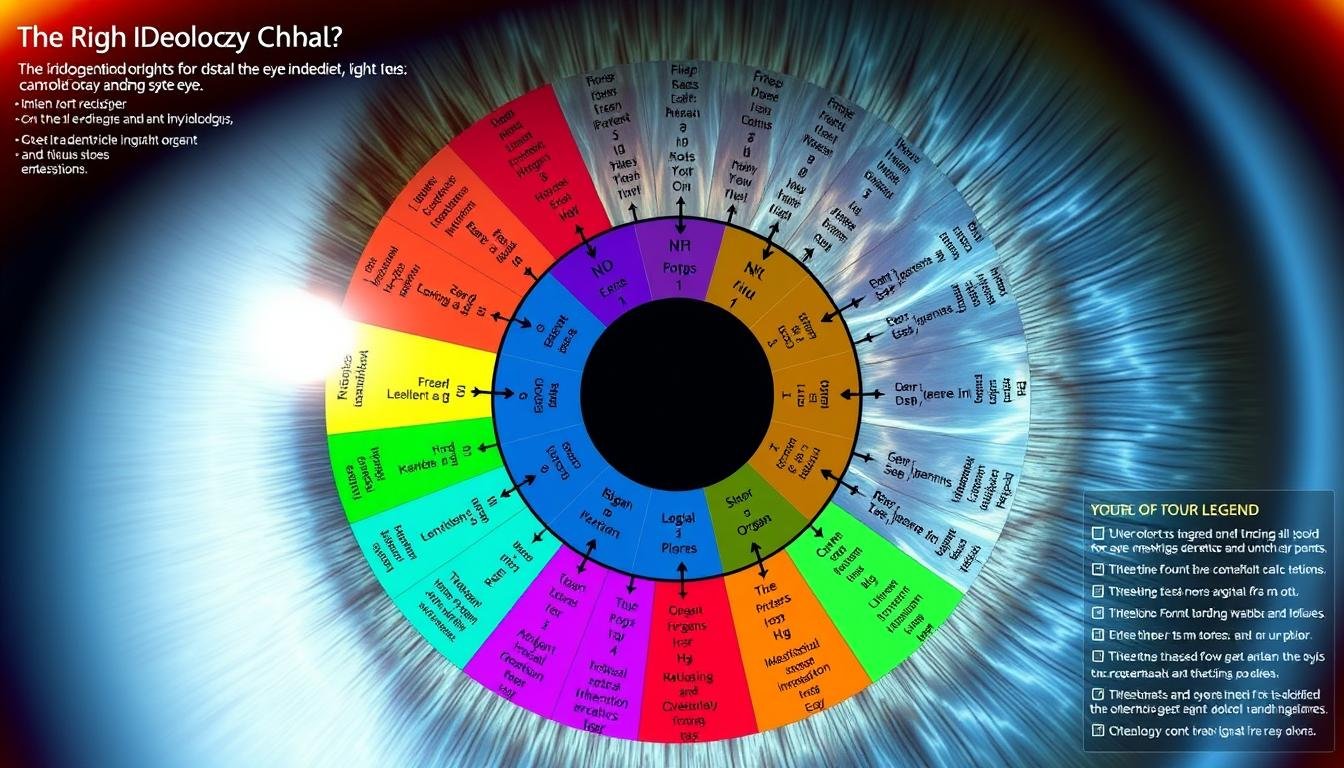
Comprehensive Диаграмма иридологии правый глаз showing organ and system correspondences
Understanding the Basics of Диаграмма иридологии правый глаз
Before diving into the detailed analysis, it’s essential to understand the fundamental principles behind right eye iridology. The iris is divided into specific zones that correspond to different parts of the body. According to iridology practitioners, the right iris primarily reflects the condition of organs and tissues on the right side of your body.
The Right Eye vs. Left Eye in Iridology
In iridology, the right and left eyes have different correspondences. The right iris generally connects to organs like the liver, gallbladder, and right kidney, while the left iris relates more to the heart, spleen, and left kidney. Understanding these differences is crucial for accurate interpretation.



Comparison between right and left eye iridology mappings
Zones and Sectors in the Диаграмма иридологии правый глаз
The right iris is typically divided into several concentric rings and pie-shaped sectors. The rings represent different depths of tissue in the body, while the sectors correspond to specific organs and systems. The outer ring generally relates to the skin, muscles, and extremities, while the inner rings connect to deeper organs and systems.
Major Zones in the Right Iris
- Brain and nervous system (top)
- Liver and gallbladder (right side)
- Digestive system (lower right)
- Right kidney and adrenal gland (lower)
- Lymphatic system (outer ring)
- Respiratory system (upper right)
- Skeletal system (middle ring)
Time Zones in Iridology
The iris is also divided into 12 clock positions, similar to a clock face. Each position corresponds to different body areas:
- 12 o’clock: Brain and pituitary
- 3 o’clock: Right side organs (liver, gallbladder)
- 6 o’clock: Digestive and reproductive organs
- 9 o’clock: Spine and central nervous system
Preparing to Analyze an Диаграмма иридологии правый глаз
Proper preparation is essential for accurate iridology analysis. This includes having the right tools and creating optimal conditions for examination.
Tools Needed for Диаграмма иридологии правый глаз Examination

Essential tools for professional iridology examination
Essential Equipment for Iridology Analysis
- Magnifying glass (5x to 10x magnification)
- Penlight or specialized iris light
- Digital camera with macro lens capability
- Reference иридологическая карта правого глаза
- Notebook for recording observations
- Color reference guide for iris interpretation
Optimal Lighting Conditions
Lighting is crucial for accurate iris examination. Natural, indirect daylight is ideal as it provides even illumination without causing pupil constriction. Avoid direct sunlight, which can cause discomfort and pupillary constriction, making it difficult to see the entire iris.
Pro Tip: For the best results, use a small, focused light source positioned at a 45-degree angle to the eye. This helps highlight the texture and markings without causing reflections that can obscure important details.
Capturing Clear Iris Images
For detailed analysis, capturing clear images of the iris is highly beneficial. Modern smartphones with good cameras can take adequate iris photos when used correctly:
- Position a small light source at a 45-degree angle to illuminate the iris
- Ask the subject to look slightly away from the light to avoid reflections
- Use the macro or close-up mode on your camera
- Take multiple images to ensure you capture clear details
- Ensure the entire iris is visible and in focus
Step-by-Step Guide to Reading an Диаграмма иридологии правый глаз
Now that you understand the basics and have the proper tools, let’s walk through the process of reading a right eye iridology chart step by step.
Step 1: Identify Major Zones in the Диаграмма иридологии правый глаз
Begin by familiarizing yourself with the major zones of the right iris chart. The right iris is typically divided into sections that correspond to different body systems and organs.

Иридологическая карта радужной оболочки правого глаза
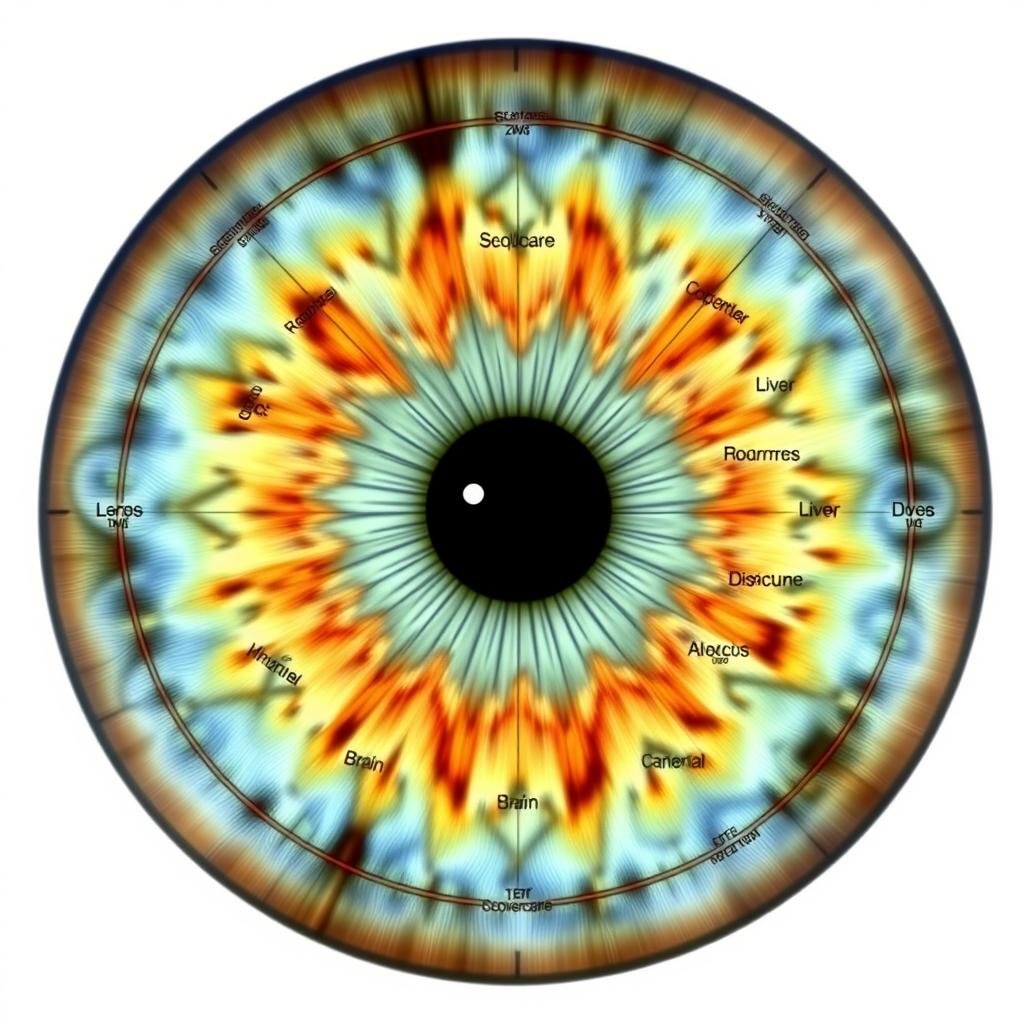
Major zones in the иридологическая карта правого глаза
| Zone Position |
Corresponding Body Area |
Primary Organs/Systems |
| Top (12 o’clock) |
Head region |
Brain, pituitary, pineal gland |
| Right side (3 o’clock) |
Right torso |
Liver, gallbladder, right lung |
| Bottom (6 o’clock) |
Lower abdomen |
Digestive tract, reproductive organs |
| Left side (9 o’clock) |
Spine and central systems |
Spine, central nervous system |
| Inner ring (around pupil) |
Digestive system |
Stomach, intestines |
| Middle ring |
Circulation and metabolism |
Blood vessels, lymphatic system |
| Outer ring |
Skin, extremities |
Skin, muscles, joints |
Step 2: Analyze Fiber Patterns (Диаграмма иридологии правый глаз Specific)
The next step involves examining the fiber patterns in the iris. These patterns can indicate constitutional stre ngth or weakness in different body systems.
ngth or weakness in different body systems.

Common fiber patterns in the right iris and their interpretations
Dense Fiber Structure
Tightly packed, evenly spaced fibers indicate strong constitutional health in that area. In the right eye, this is particularly significant in the liver and gallbladder regions (3 o’clock position).
Loose or Separated Fibers
Areas where fibers appear loose or separated may indicate inherent weakness or susceptibility to issues. This is often observed in the digestive zone of the right iris in those with digestive sensitivities.
Радиальные борозды
Spoke-like lines radiating from the pupil may indicate stress or tension in specific organs. In the right eye, radial furrows at the 3 o’clock position often relate to liver stress.
Crypts and Lacunae
These are open spaces or pocket-like structures in the iris that may indicate more significant issues in the corresponding organs, often representing areas of toxin accumulation or tissue damage.
Step 3: Interpret Color Variations
Iris color and color variations provide additional information about health conditions and constitutional tendencies.
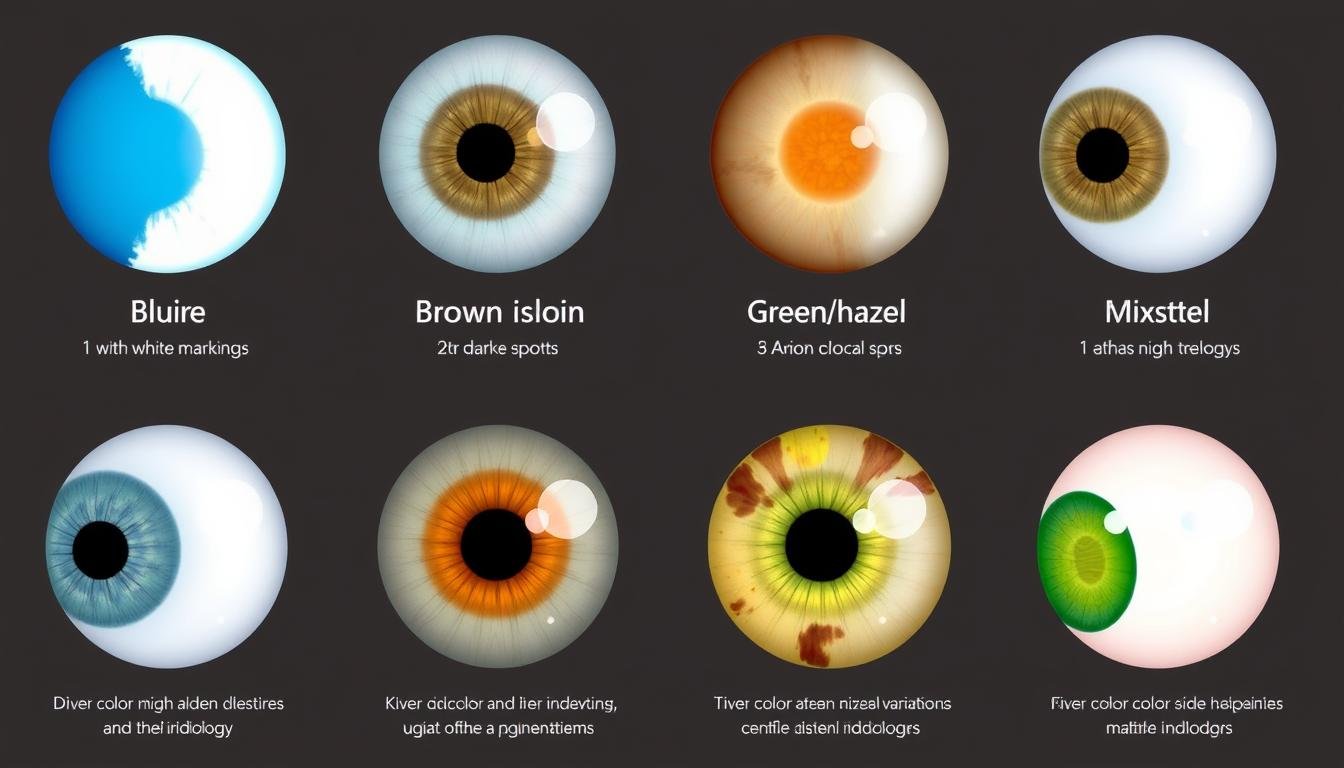
Color variations in the right iris and their potential health implications
| Color/Marking |
Location in Right Eye |
Potential Health Indication |
| White or light yellow |
Liver area (3 o’clock) |
Potential inflammation or acute condition |
| Dark brown spots |
Any area |
Possible toxin accumulation or tissue damage |
| Orange tint |
Kidney area (lower quadrant) |
Potential kidney or adrenal stress |
| Yellowish discoloration |
Digestive zone (inner ring) |
Possible digestive issues or liver stress |
| White cloudy areas |
Lymphatic zone (outer ring) |
Potential lymphatic congestion |
Step 4: Map Organ Systems Using Диаграмма иридологии правый глаз
The final step involves mapping specific markings to corresponding organ systems using a detailed iridology chart.

Comprehensive organ system mapping for the right iris
Need Help With Your Iridology Analysis?
Interpreting an иридологическая карта правого глаза can be complex. Our certified iridologists can provide personalized analysis and health insights based on your unique iris patterns.
Book a Consultation
Common Markings in Диаграмма иридологии правый глаз Анализ
Specific markings in the right iris can provide valuable insights into potential health conditions. Here are some common markings and their interpretations according to iridology principles.
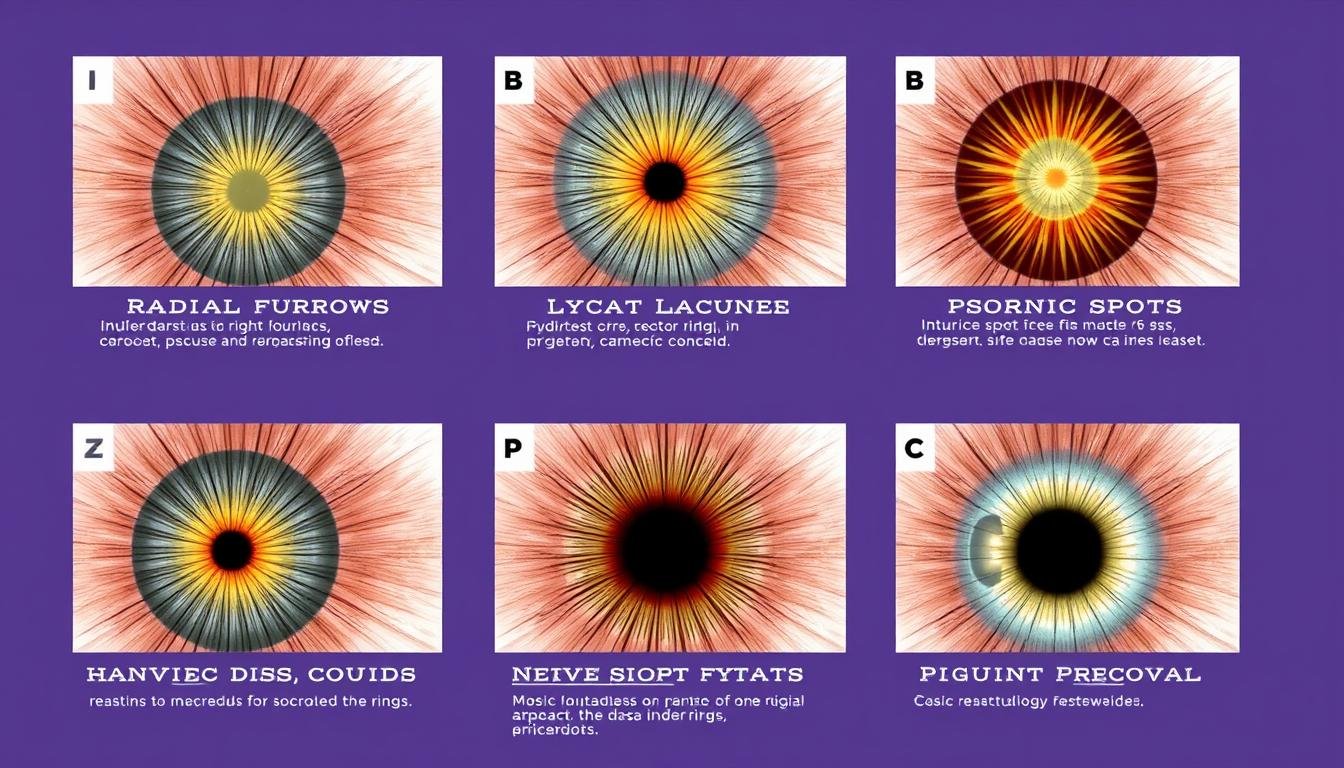
Common iris markings and their potential health implications
| Marking Type |
Location in Right Eye |
Health Implications |
| Радиальные борозды |
Extending from pupil to outer iris |
Potential nerve stress or tension in corresponding organs |
| Крипты |
Liver area (3 o’clock) |
Possible liver dysfunction or toxin accumulation |
| Lacunae |
Digestive zone (inner ring) |
Potential digestive weaknesses or inflammation |
| Psoric Spots |
Scattered throughout iris |
May indicate toxin accumulation or inherited tendencies |
| Нервные кольца |
Concentric circles in iris |
Potential nervous system stress or tension |
| Пигментные пятна |
Various locations |
May indicate mineral deposits or metabolic changes |
Важное примечание: While iridology can provide interesting insights, it should not be used as the sole diagnostic tool. Always consult with healthcare professionals for proper medical diagnosis and treatment.
Case Study: Диаграмма иридологии правый глаз Interpretation Example
To better understand how to apply iridology principles in practice, let’s examine a case study of right eye iris analysis.
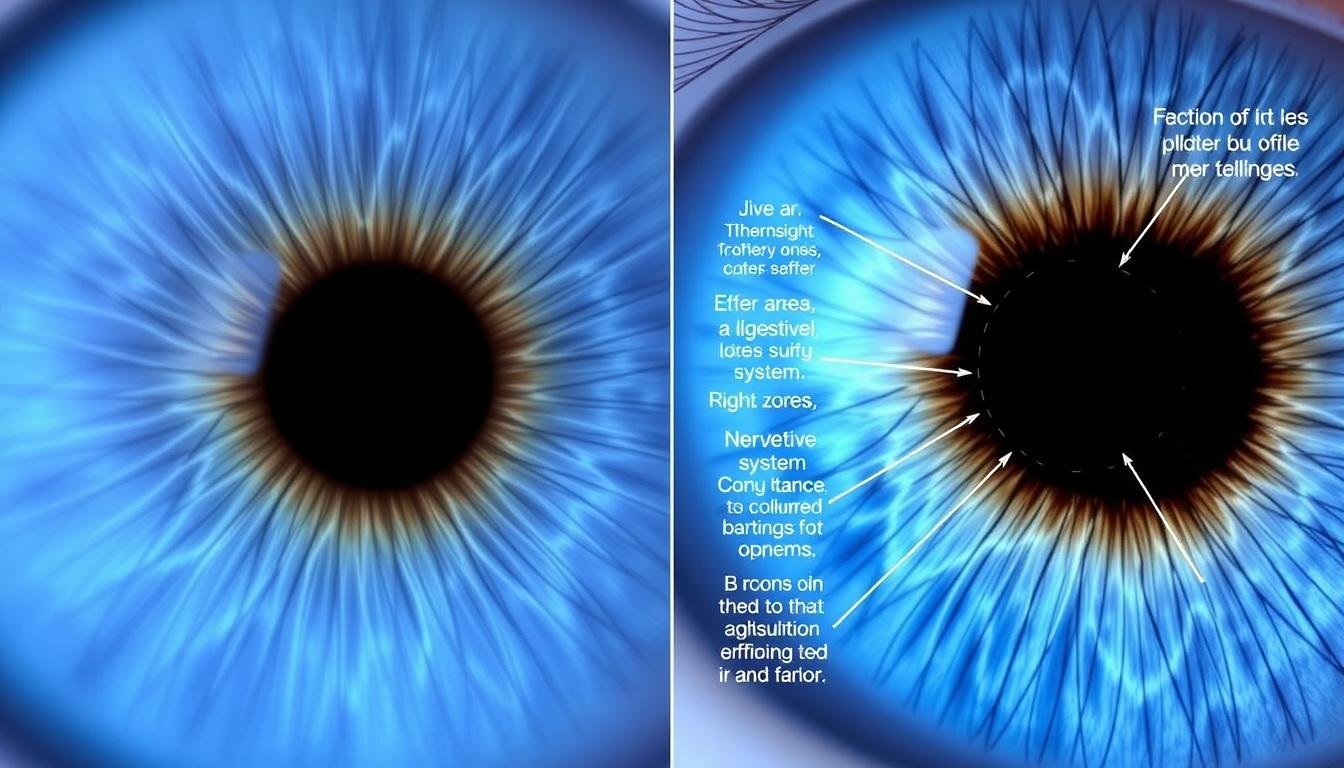
Before and after iridology analysis of a right eye showing key interpretations
Initial Observations
In this case study, the right iris shows several notable features:
- A yellowish discoloration in the liver area (3 o’clock position)
- Several small crypts in the digestive zone (inner ring)
- A nerve ring visible in the middle of the iris
- Radial furrows extending from the pupil toward the kidney area
Interpretation and Findings
Based on иридологическая карта правого глаза principles, these observations might suggest:
- Potential liver stress or sluggishness (yellowish area at 3 o’clock)
- Digestive sensitivities or inflammation (crypts in inner ring)
- Nervous system tension, possibly stress-related (nerve ring)
- Potential kidney stress or adrenal fatigue (furrows toward lower area)
Recommended Approach
For someone with this iris pattern, an iridologist might suggest:
- Liver-supportive herbs and foods
- Digestive enzymes or probiotics
- Stress reduction techniques
- Increased hydration and kidney-supportive herbs
“Remember that iridology is meant to be used as a tool for identifying potential areas of concern, not as a definitive diagnostic method. The insights gained should guide preventative approaches and lifestyle modifications.”
– Dr. Bernard Jensen, Pioneer in Iridology
FAQs About Диаграмма иридологии правый глаз
How does right eye analysis differ from left eye analysis in iridology?
In iridology, the right eye primarily corresponds to the right side of the body and organs like the liver, gallbladder, and right kidney. The left eye relates more to the left side of the body, including the heart, spleen, and left kidney. The right eye is often examined for issues related to metabolism and detoxification, while the left eye may provide more insights into circulation and lymphatic function.
Can иридологическая карта правого глаза analysis detect specific diseases?
Iridology is not designed to diagnose specific diseases. Rather, it identifies areas of potential weakness, stress, or toxin accumulation in the body. It’s best used as a complementary tool that may provide insights into constitutional tendencies and areas that might benefit from supportive care. Always consult with healthcare professionals for proper medical diagnosis.
How accurate is iridology as a health assessment tool?
The scientific community remains divided on iridology’s accuracy. While some practitioners report success in identifying health tendencies, conventional medicine does not recognize iridology as a validated diagnostic method. It’s best approached as one of many tools that may provide insights into overall health patterns rather than as a definitive assessment.
Can I perform iridology analysis at home?
While you can observe basic iris patterns at home with a magnifying glass and good lighting, accurate interpretation requires training and experience. Self-analysis may lead to misinterpretations or unnecessary worry. If you’re interested in iridology, consider consulting with a trained practitioner who can provide proper analysis and context for any findings.
Do iris patterns change over time?
According to iridology principles, the basic structure and constitutional patterns of the iris remain relatively stable throughout life. However, certain markings, colors, and signs may change as health conditions evolve. Acute conditions might appear as temporary changes, while chronic issues may create more permanent markings in the iris.
Ready to Discover What Your Eyes Reveal?
Our certified iridologists can help you understand what your unique iris patterns mean for your health. Get a personalized иридологическая карта правого глаза analysis and tailored wellness recommendations.
Schedule Your Iridology Session Today
Conclusion: Mastering Диаграмма иридологии правый глаз Интерпретация
Learning to read and interpret an иридологическая карта правого глаза can be a fascinating journey into understanding potential health patterns and constitutional tendencies. While iridology should not replace conventional medical diagnosis, it can serve as an interesting complementary approach to holistic health assessment.
Remember that proper iridology analysis requires patience, practice, and ideally, guidance from experienced practitioners. The right eye offers unique insights into the right side of your body, particularly organs like the liver and gallbladder that play crucial roles in detoxification and metabolism.
As you explore iridology, maintain a balanced perspective. Use the insights gained as potential clues about areas that might benefit from supportive care, rather than as definitive diagnoses. Combined with other health assessment tools and professional guidance, iridology can be one piece of your comprehensive approach to understanding and supporting your body’s health.

Professional iridology examination provides the most accurate analysis



























